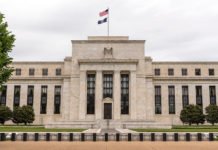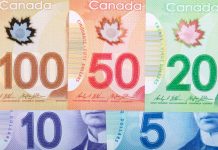Output expands by a moderate 0.8%. Domestic demand robust at 1.6%. Weather disruptions and omicron wave disrupted production. Household saving ratio moderated in Q1, but still elevated at 11.4%.
Output expanded by a moderate 0.8% in the March quarter.
That was broadly in line with market expectations, market median 0.7% and a little above Westpac’s forecast of 0.6%.
Annual growth is 3.3%. The level of activity is 4.5% above that at the end of 2019, prior to the pandemic.
GDP, three measures: the GDP headline is an average of three measures: expenditure, income and production. GDP (E) printed at 0.8% qtr, GDP (I) 0.8% and GDP (P) was 0.7%.
Hours worked: The National Accounts estimate that hours worked declined by -0.9% in the quarter – constrained by wet weather / severe flooding in NSW and Qld, as well as the omicron wave. Recall that the Labour Force Survey reported hours worked down by -1.2%.
State demand: State final demand growth was strongest in Victoria, +2.4%, on the reopening from delta lockdowns, and WA, +2.2%. Qld recorded only a modest 0.8% rise, impacted by wet weather, and NSW was also on the softer side, at 1.2%, impacted by those weather disruptions. Nationally, domestic demand grew by 1.6%, broadly as anticipated.
Key surprises: The key upside surprise was “other inventories” which added 0.4ppts, whereas we had expected a contribution closer to 0.1ppt. Farm stocks, added 0.2ppts, run down at a slower rate, after a sharp Q4 decline. Public authorities inventories added 0.2ppts as well, with a sizeable accumulation – factors can range from stockpiles of covid vaccinations to gold.
The consumer: Total consumer spending increased by 1.5%, broadly as expected.
Spending on discretionary goods and services increased 4.3%, exceeding pre-pandemic levels for the first time. The reopening of domestic and international borders contributed to rises in transport services (+60.0%), recreation and culture (+4.8%) and hotels, cafes and restaurants (+5.3%). Purchase of vehicles rose 13.0% as supply constraints eased.
Essential spending declined 0.2%. Expenditure on food declined 2.0%, reflecting the continued shift towards eating out as restrictions eased. Spending on health also fell as elective surgeries and visits to health practitioners were cancelled as Omicron cases increased
Household saving ratio: Understandably, with the reopening, the household saving ratio moderated. The ratio is at 11.4% in Q1, down from a 13.4% in Q4 and after spiking to 19.7% in Q3 (associated with the delta lockdowns which constrained consumer spending and boosted by government payments).
Incomes were somewhat better than expected in the quarter, supportive of the saving ratio.
The saving ratio is still elevated at 11.4% – well above the “equilibrium rate”, which is in the order of 6%. Prospects for a further moderation in the saving ratio will support spending going forward.
Expenditure detail:
Home building activity declined, down by -1.0%, impacted by wet weather and supply headwinds (shortages of labour and materials). That was a little weaker than the partial (a -0.1%).
Business investment advanced by 1.4%, somewhat stronger than the 0.4% expected. Equipment spending rose by 3.2%, largely reversing declines over the second half of 2021 associated with delta. That was stronger than the capex survey reading of 1.2%.
Public demand expanded by 2.6%, bouncing back from a rare decline, -0.1%. Government spending has been a key growth driver – led by the health response to covid, as well as an uptrend in investment.
Net exports -1.7ppts, a hefty subtraction on a flood of imports, +8.1%, representing a catch-up following weakness over the second half of 2021 associated with the delta lockdowns.
Total inventories added 1.0ppt. Other inventories added 0.4ppts, as discussed above. A rebuild of non-farm business inventories on a flood of imports (adding 0.6ppts).














